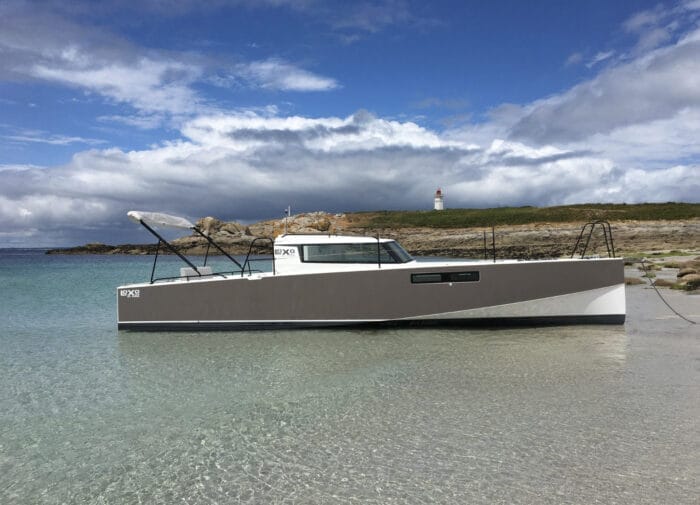
Tips, Tricks & Thoughts:
motorboats
-
Just What The World Doesn’t Need
51 CommentsReading Time: 2 minutesMembers
-
Kilowatts and Horsepower
9 CommentsReading Time: 2 minutesFree
I’m as concerned about climate change as anyone, and maybe more than most, but obfuscation and pretengineering does not help us get to a sustainable future.
A good example is the way that electric-drive vendors use horsepower when talking about the diesel engine they want to replace and kilowatts when talking about their offerings.
You see, horsepower and watts measure the same thing: power.
1HP=.7457kW
It’s that simple,
I was triggered to write this by an electric-drive company claiming that installing their serial-hybrid drive—diesel generator driving an electric motor—in a long thin efficient motorboat would save 30% in fuel burn over the standard diesel engine that comes with the boat.
But here’s the smoking gun, they promised 8.5 knots top speed with the generator driving the electric motor, but with the standard diesel that boat can do 18 knots and cruises efficiently at 10.
Yup, all they have done is decrease the power, probably by more than half. Of course that will save fuel.
But here’s the thing, in most usage profiles for cruising boats, simply putting in a right-sized diesel engine and settling for say 9 knots cruise and about 11 knots wide open—still faster than the electric—instead of 18, would almost certainly save more fuel as well as costing way less (think less than half), and weighing less, than an electric motor, generator, and a huge lithium battery bank.
The latter to run silent for an hour or so…and then have to be charged with…the diesel generator, in most cases.
Wait, it gets worse, weight is a killer on a boat like this, making the hybrid setup an even sillier idea since it will weigh way more than the right-sized diesel and so make her even less fuel efficient and take up more space.
What fevered mind came up with the idea that burning diesel to create rotation (generator engine), and then turning that into electricity (generator alternator), and then turning that back into rotation (electric motor), is more efficient than burning diesel to make rotation (diesel engine) in the first place—conversion losses are a bitch (they compound)—one conversion always beats three.
Sure, electric is great, as long as we stay close to a source of renewable produced power, but staying close to the dock is not what people will use this boat for—and no, a practical amount of solar panels are not going to help much.
Which brings us a full circle.
It’s always a danger signal when a sales person talks HP one moment and kW the next. They are probably trying to hide something, and now you know what that is.
And no, there is nothing magical about a horsepower or a watt just because it was produced by an electric motor. The whole torque thing is most-all BS too when applied to cruising boats—great though if you want to get a heavy train moving from a standing start.
More about all this here, including a very cool calculator, which will let you see if your usage profile will benefit from an electric drive. It’s a bit out of date but the basic physics does not change…conversion losses are a bitch…wait, I already said that.
-
Cool Motorboat
7 CommentsReading Time: 2 minutesFree
A few years ago I got interested in efficient motorboats and wrote several articles on the subject. At the time there were almost none around, with the exception of the FPBs from our friends Steve and Linda Dashew that cost millions, and a first try from a budding designer in New Zealand that still cost more than most of us can afford, and since then his boats have got bigger and way more expensive.
Other than that the market was, and mostly is, all huge barge-like trawlers so inefficient that some 47-foot examples have 300 HP engines, and even with that power and horrendous fuel burn can’t get out of their own way.
But at last that seems to be changing, with two new efficient motorboat offerings. I will write about the other in another Tip, but check out the 32-footer from Pogo that can cruise all day at 10 knots and top out at 15 knots, driven by just 50 HP!
And all of this brand new for €130,000 (US$138,672).
Of course this is not an offshore boat, but totally fit for coastal cruising and staying aboard for a week or so while doing it.
They also make an outboard version and are promising a 40 footer.
While the mission is very different, the idea of focusing on doing one thing really well, while stripping away all unnecessary complication, is very like the Adventure 40—love it.
We need more of this kind of thinking.
Thanks to member Richard for the heads-up.


